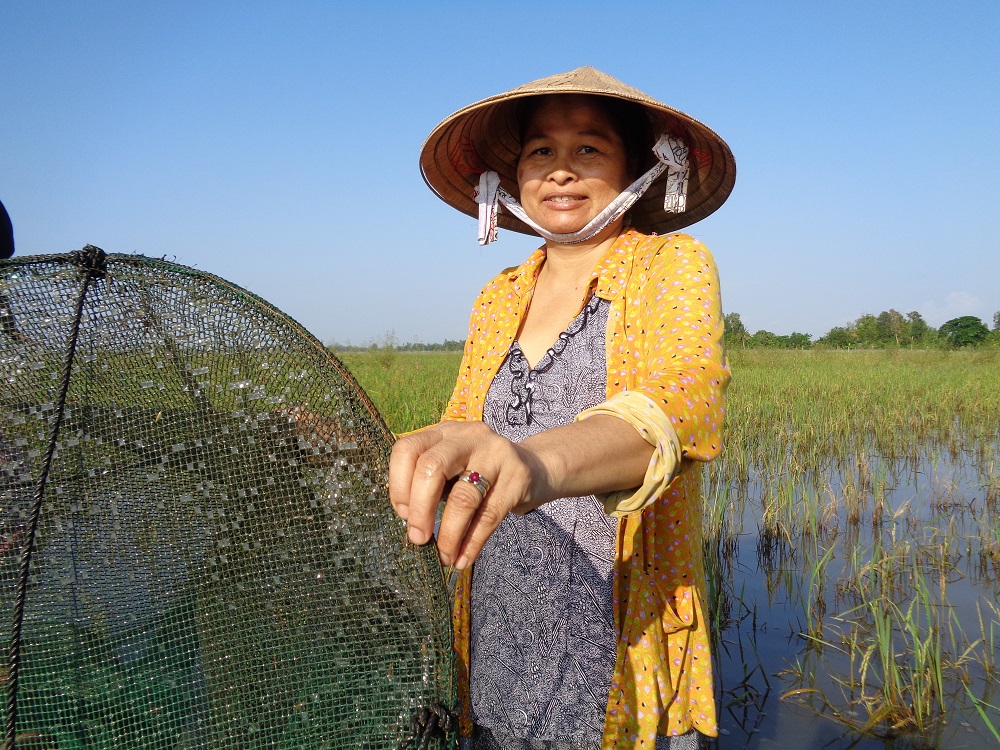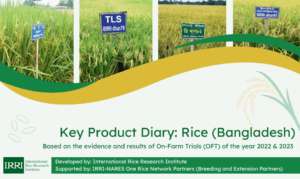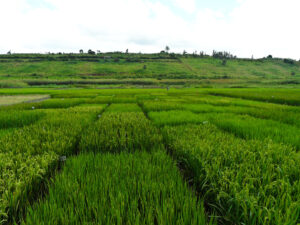A decade of research demonstrates that “citizen science” has a major role to play in curbing ecosystem threats to the Ganges and Mekong River deltas.

Rich in natural resources, including fertile land, abundant water, and a wealth of biodiversity, coastal deltas across the tropics serve many nations as “breadbaskets” or “rice bowls.” Such is the case for Asia’s Ganges and Mekong River deltas, two of the world’s largest. Providing livelihoods for rural people, they also produce nutritious food (rice, fruit, fish, and shrimp) for hundreds of millions of consumers.
Deltas under pressure
Yet, both deltas face a wide array of threats—from storm surges to water pollution. Like other tropical deltas, the Ganges and Mekong are particularly vulnerable to these hazards because of high population density, entrenched poverty, and heavy dependence on natural resources for livelihoods. Arguably, these deltas have neared a tipping point, beyond which damage to key ecological services will become irreparable, fraying the fabric of rural life and adding momentum to already high levels of outmigration.
The growing pressures have resulted to a large extent from human activities. So, in theory, it should be possible to curb or reverse the threats through concerted action. This is the thinking that prompted CGIAR researchers to embark over a decade ago on a search for solutions in partnership with national research institutes and nongovernment organizations in the Ganges and Mekong deltas. Their collaboration gave rise to efforts that today form part of the CGIAR Research Program on Water, Land and Ecosystems (WLE), which is led by the International Water Management Institute (IWMI).
A key conclusion of WLE research is that “citizen science” can be highly effective for testing and implementing management solutions that markedly improve ecosystem services in these deltas. This approach has proved especially useful for creating new market opportunities that appeal to young women and men. It works best when forming part of a wider effort to strengthen local resource management institutions.
Engineering is not enough
Since the 1960s, governments have tried to reduce the uncertainty surrounding agriculture in the Ganges and Mekong by investing heavily in infrastructure. This included polders in Bangladesh (a Dutch innovation involving the enclosure of low-lying areas with earthen embankments) to protect against flooding as well as better roads and domestic water supplies.
In Vietnam, drainage projects and rehabilitation of irrigation systems, combined with policy innovations and increased fertilizer use, enabled many farmers to grow three rice crops per year—a practice that is now becoming ecologically unsustainable, however. The construction of 139 polders in Bangladesh’s coastal zone, in contrast, yielded less striking results. With flooding still a constant threat, agricultural production is far lower there than elsewhere in the country, partly because farmers grow tall traditional rice varieties in systems that also include the production of vegetables, shrimp, and fish in different combinations of fresh and brackish water.
In both countries, sustaining more intensive production will become increasingly difficult as climate change ramps up the pressure on the deltas’ complex and fragile ecosystems. Droughts and floods, for example, have already become more common and severe. In many cases, water infrastructure no longer gives adequate protection against problems such as rising sea levels and salinization of agricultural lands.
The main reason is that dam construction upstream has altered water flows and sedimentation, an effect amplified by the Bangladesh polders themselves, which are often poorly maintained and managed. One key indicator of the resulting environmental damage in both deltas is a sharp decline in fish catches, which robs the poorest households of their main protein source.
In response, the infrastructure in place urgently requires renewal. But, there is mounting evidence that engineering solutions alone will not stabilize delta ecosystems. Changes in agricultural production systems offer a more viable development pathway. But, how to bring about such changes? Although the solutions vary between Bangladesh and Vietnam, both contain a strong dose of citizen science.

Rural people power
WLE research in Vietnam has centered on the use of a participatory research method, called Thai Baan. Its chief distinguishing feature is that the people whose livelihoods depend on natural resources take responsibility for building knowledge about their role in managing these resources. Local officials should preferably take part as well to ensure their buy-in for resulting innovations. innovations. Led by the Center for Water Resources Conservation and Development (WARECOD), researchers combined the method with another innovation called Photovoice, in which rural people, especially women, are trained to use photography and storytelling. This helps them spread research findings more widely.
The combination of techniques has given positive results, as farmers have learned how to adapt their production systems to problems such as saltwater intrusion. For this purpose, they grow rice when fresh water flows into local channels and then switch to shrimp farming when seawater arrives. Preliminary results suggest that the approach has the potential for wider application in the Mekong Delta, offering farmers greater freedom of choice in adapting their systems.
In Bangladesh, where research was led by the International Rice Research Institute, the key to success proved to be encouraging community management of irrigation and drainage canals, which permits crop diversification in the coastal zone polders. This included a shift to early-maturing, high-yielding rice varieties, which required improvements in drainage during the rainy season. Community water management units played a key role in bringing about the necessary changes.
After harvesting rice, farmers can grow high-value crops such as sunflower during the dry season. Diversification gave rise to new business opportunities for women and young people, such as homestead production of sunflower oil and the establishment of rice mat nurseries. Even landless people captured a share of the benefits through the collective management of fish farming on rice land. These are encouraging steps in the right direction. Even so, much further work is needed to overcome deep-seated barriers to gender equality and social inclusiveness in designing improvements and putting them to work.
A decade of research in the Ganges and Mekong deltas has produced promising results, though still on a pilot scale. The challenge now is to spread the use of citizen science through increased collaboration between investors and governments. Upgrading and better maintenance of engineered structures will continue to be important. But, their success depends on the active involvement of rural communities through local water management organizations that are up to the task.
______________________
Dr. Merrey is a consultant with WLE and Mr. Russell is IWMI’s senior manager – Communications and Knowledge Management.






